Valkey
What is Valkey
Valkey is a high-performance key/value datastore designed to efficiently handle a range of workloads, including caching, message queues, and primary database functions. It offers flexible deployment options as both a standalone daemon and a clustered system, with robust features for replication and high availability to ensure optimal performance and reliability. It is a versatile data structure store that offers excellent performance, flexibility, and a rich set of features. It’s a valuable tool for applications that require efficient handling of various data structures and high-speed access.
Key Features
Rich Data Structures: Supports a wide range of native data structures, including strings, numbers, hashes, lists, sets, sorted sets, bitmaps, hyperloglogs, and more.
In-Memory Performance: Designed for high-speed operations, leveraging in-memory storage for quick data access.
Expressive Commands: Provides a comprehensive set of commands for operating on data structures, enabling efficient data manipulation.
Native Extensibility: Supports Lua scripting for creating custom commands and data types, enhancing flexibility.
Clustering and High Availability: Can be run as either a standalone daemon or in a cluster, with options for replication and high availability.
Plugin System: Allows for the creation of custom modules to extend valkey’s functionality with new commands, data types, and more.
Use Cases of valkey
Caching: Valkey can be used as a high-performance cache for frequently accessed data, improving application response times.
Message Queues: It can serve as a reliable and scalable message queue for asynchronous communication between components.
Primary Database: Valkey can be used as a primary database for applications that require high performance and in-memory data storage.
Real-time Analytics: It can be used for real-time data processing and analytics due to its high-speed capabilities.
How to create Valkey DBaas
To proceed, click the “Add” button located in the upper-right corner of the screen:
After that, select the valkey cluster and continue.

Now select the plan according to your requirement

Now fill all the details and click on next button
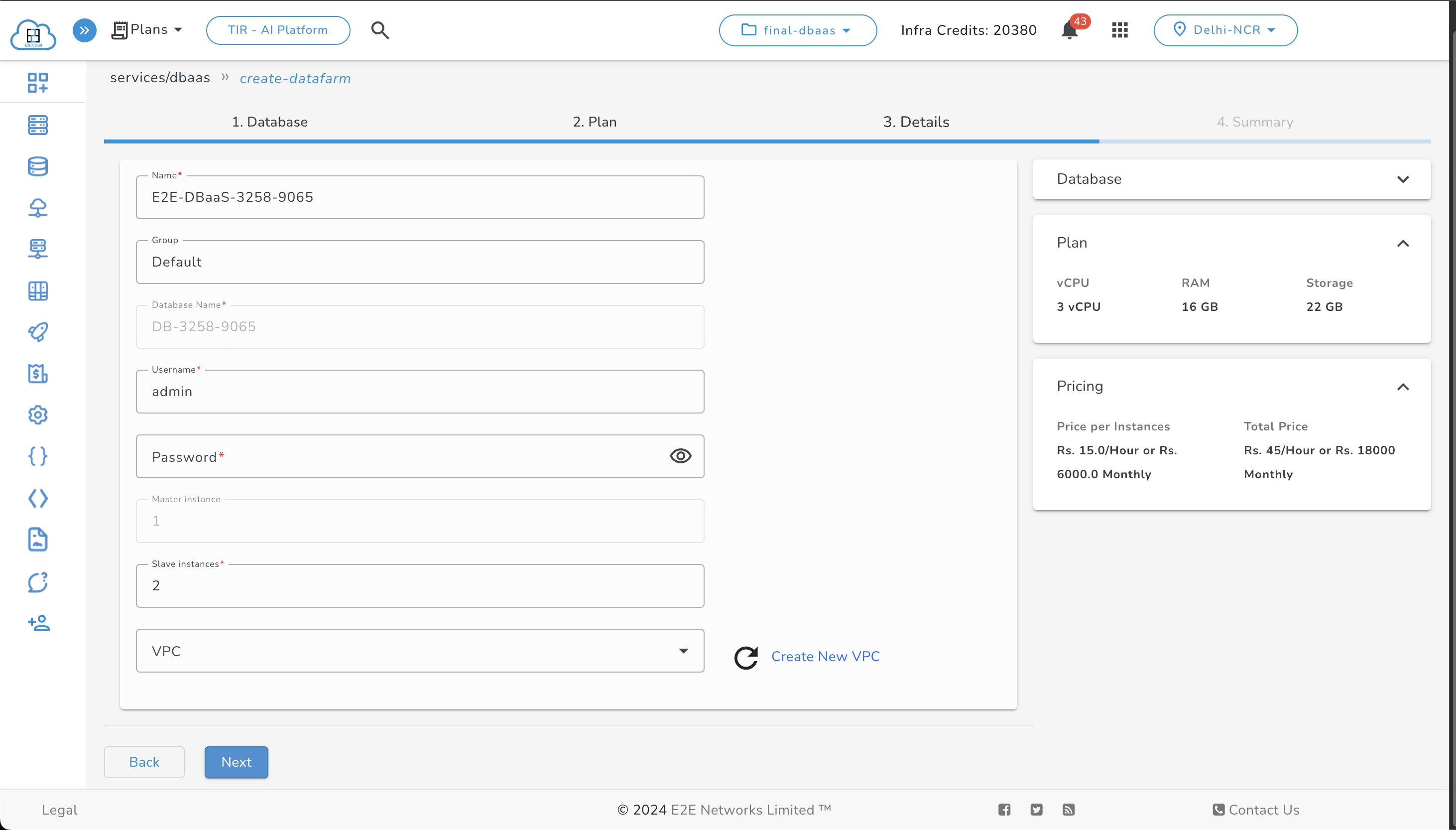
Once you have filled out all the necessary details, review them carefully on the summary page. If everything is accurate, click the “Create Database” button to proceed.
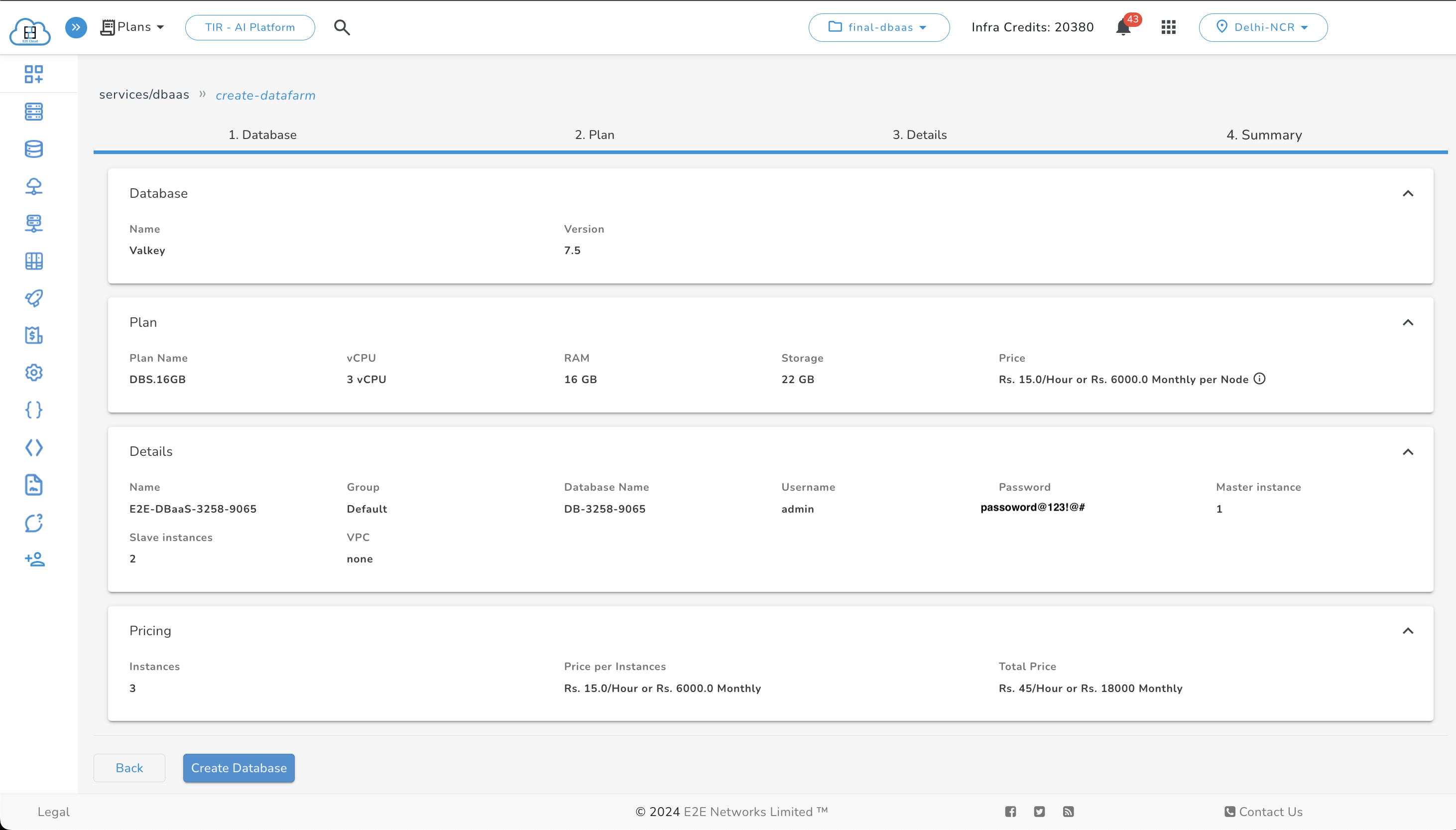
After the cluster is created you can see its details in the dbaas listing page
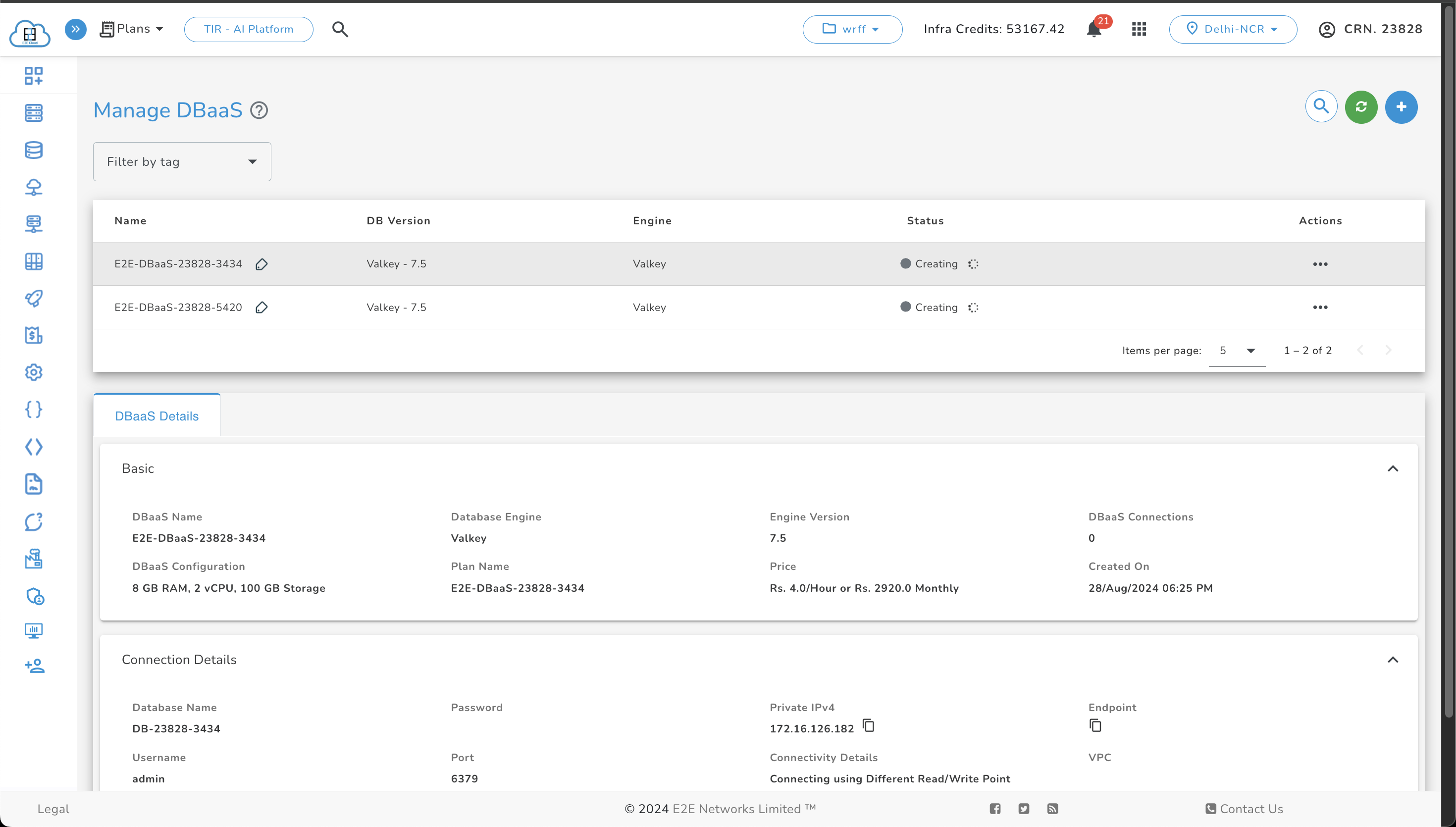
Actions
Stop
To stop the cluster, click on the three dots and then select the Stop button.
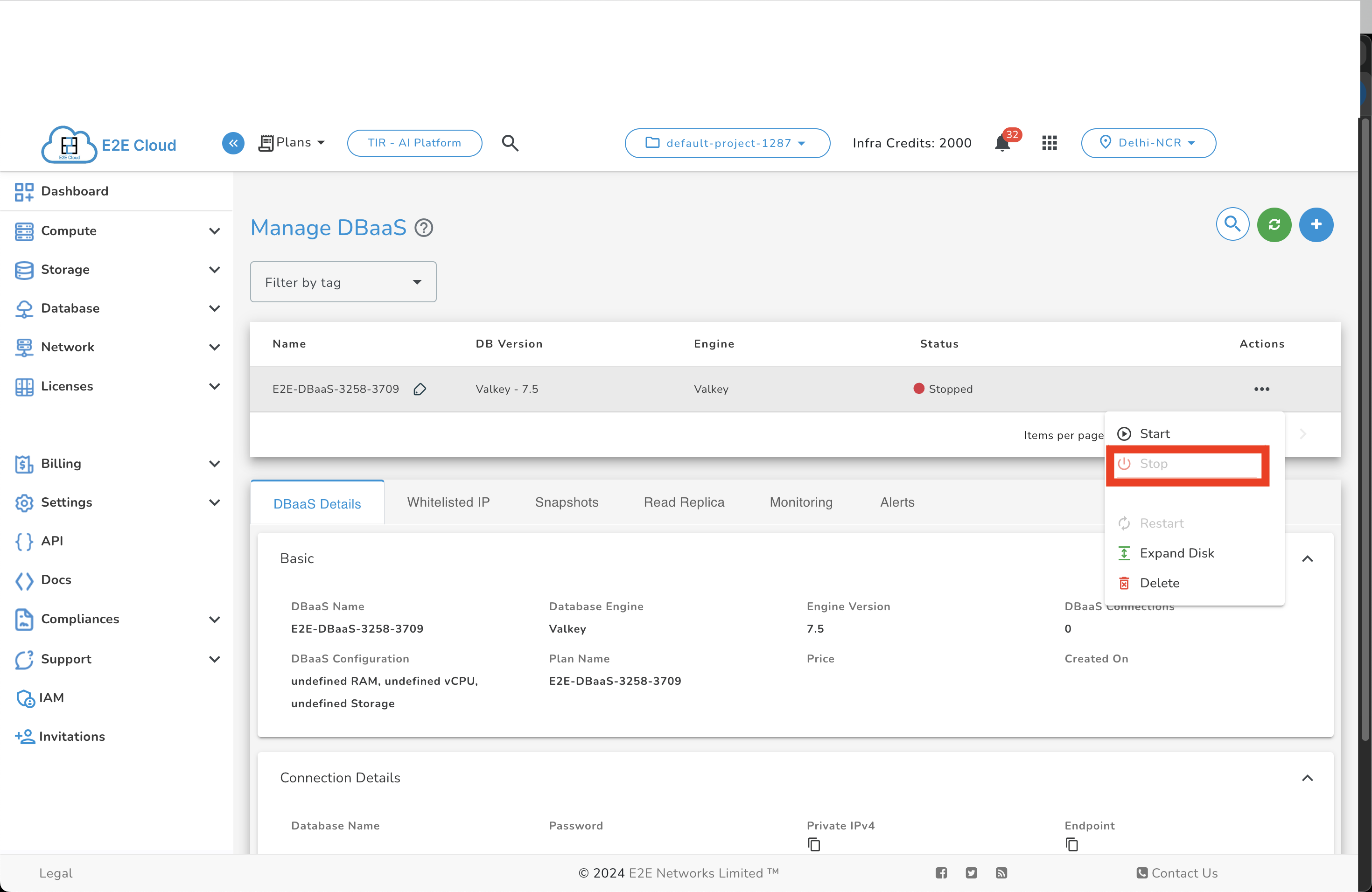
Start
To start the cluster, click on the three dots and then click on the Start button.
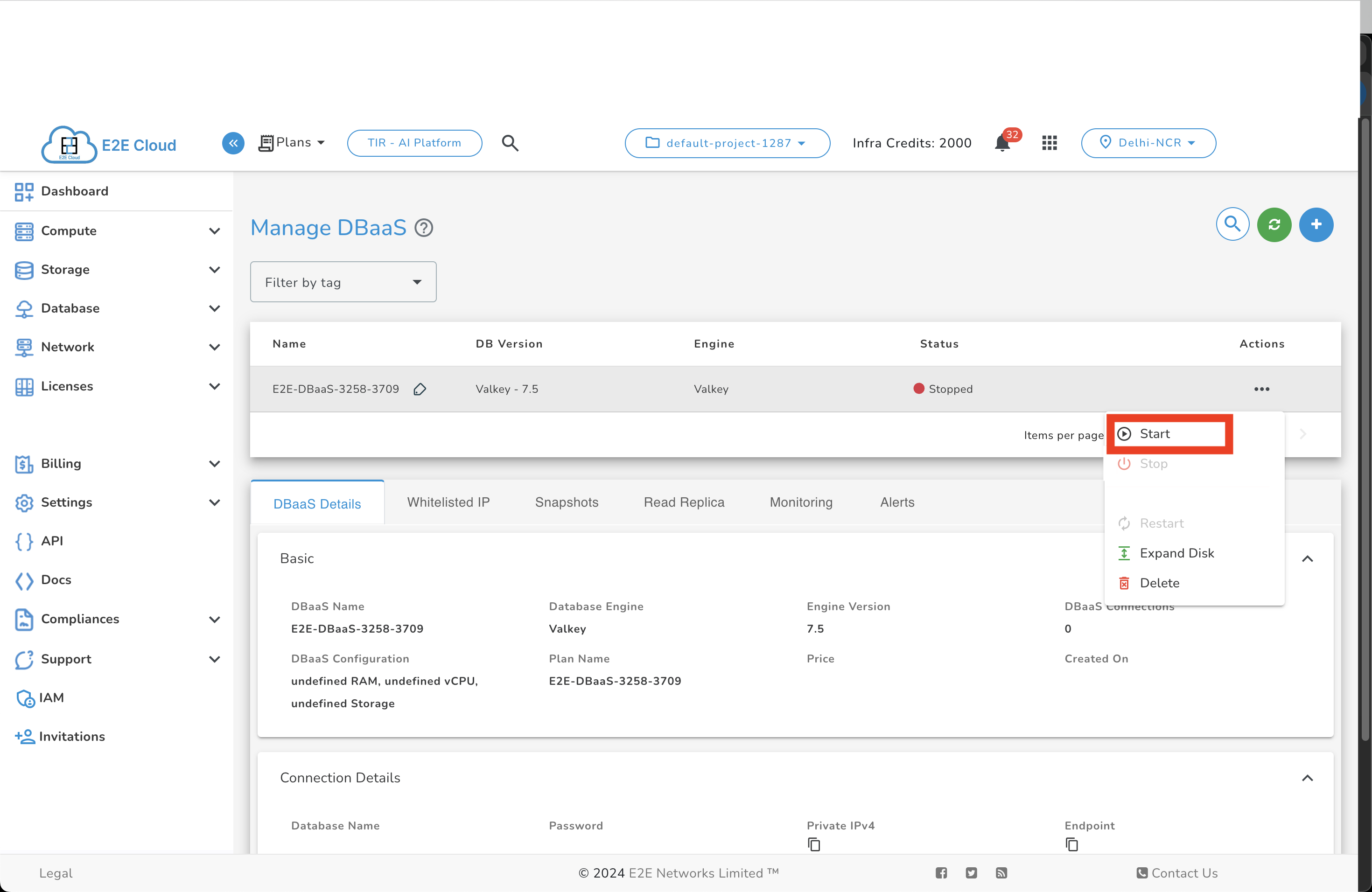
Restart
To restart the cluster click on Restart button.
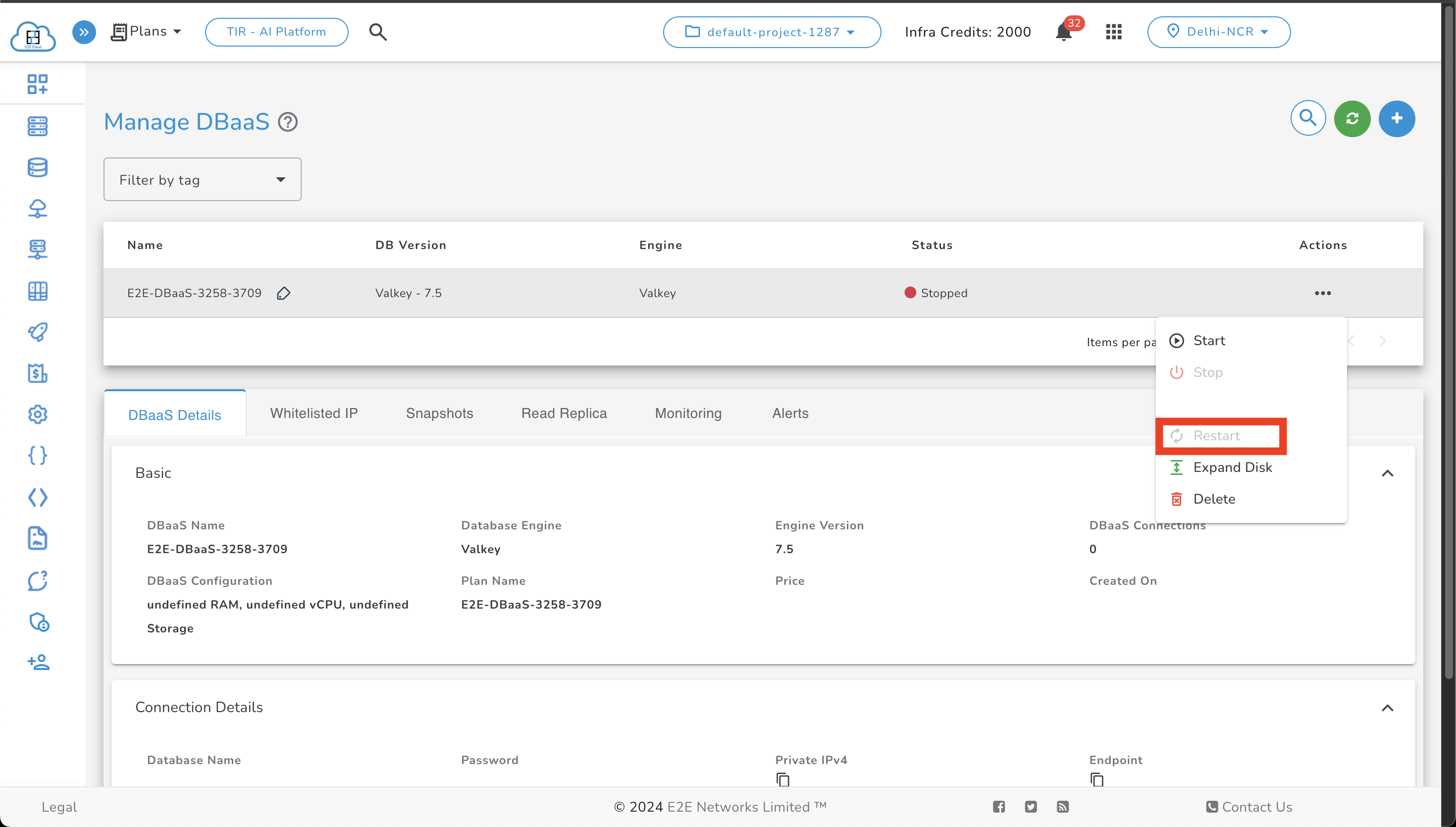
Expand Disk Size
To expand disk size click of the Expand disk button.

Delete
To delete the cluster click on Delete button.
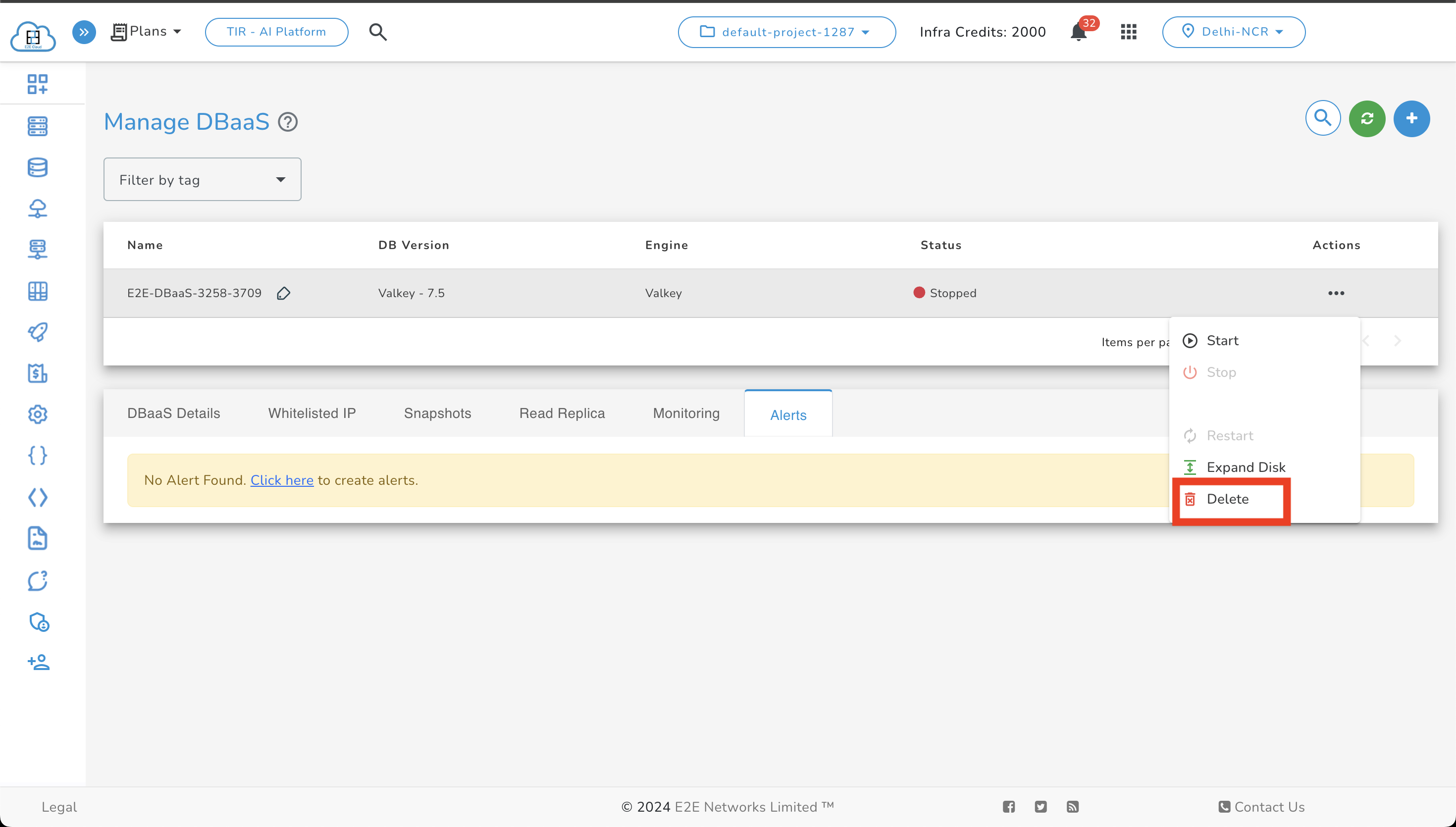
Whitelist IP
To whitelist an IP click on the add button in the Whitelisted IP tab.
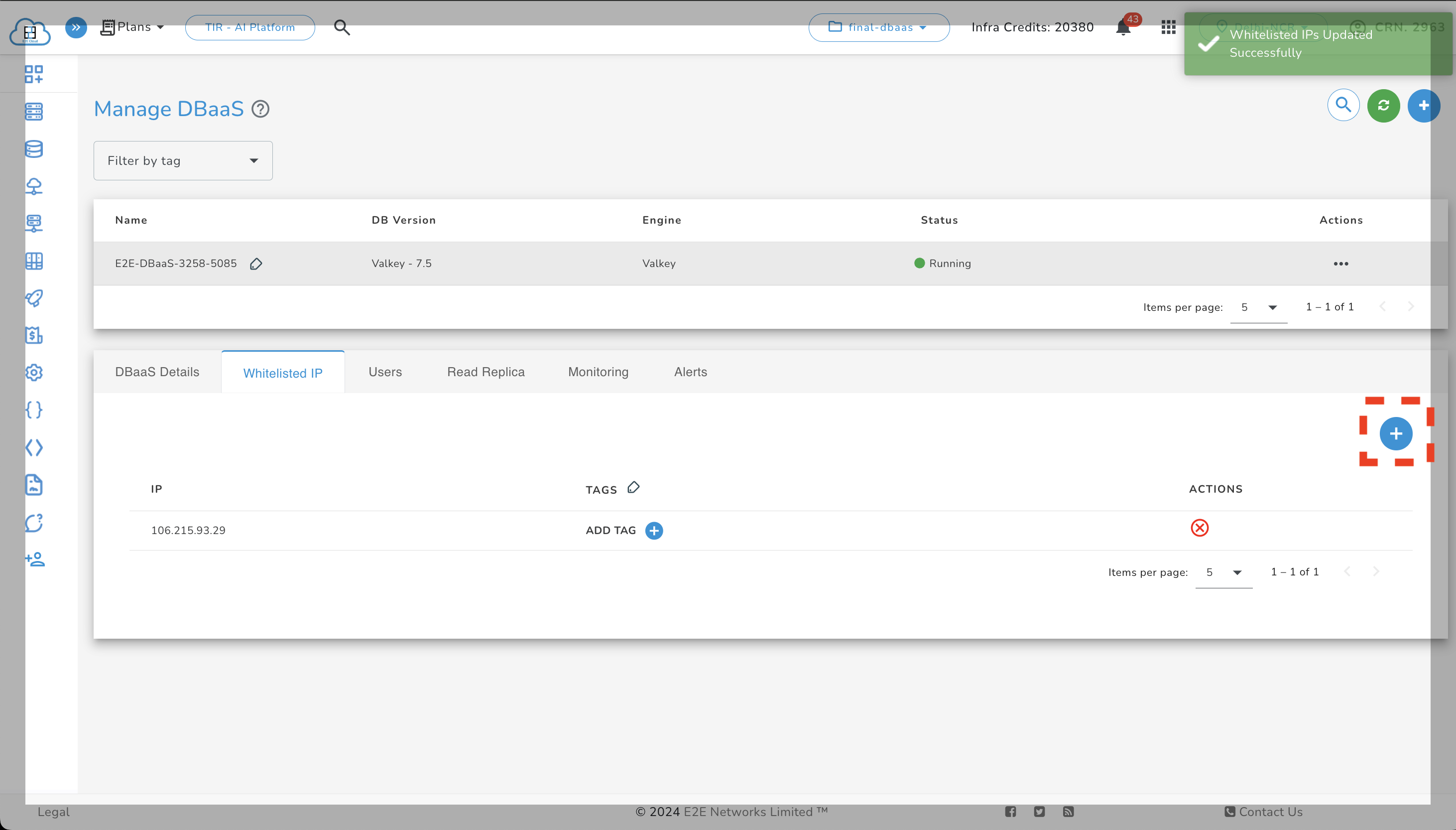
Users
To add user to the valkey database, click on the USERS tab and click on the add button.
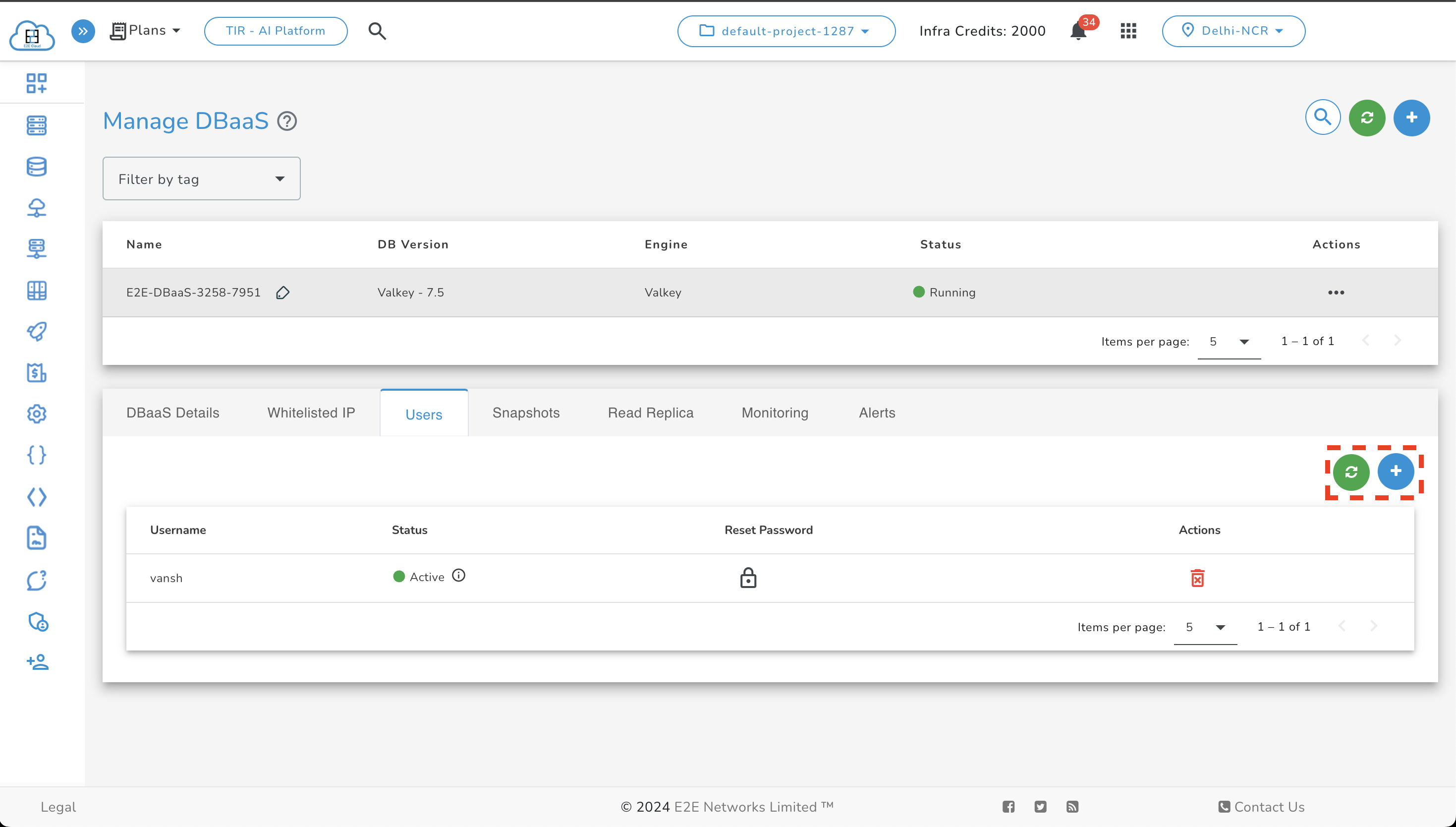
Snapshot
To take a snapshot click on the Take Snapshot button after selecting the Snapshots tab
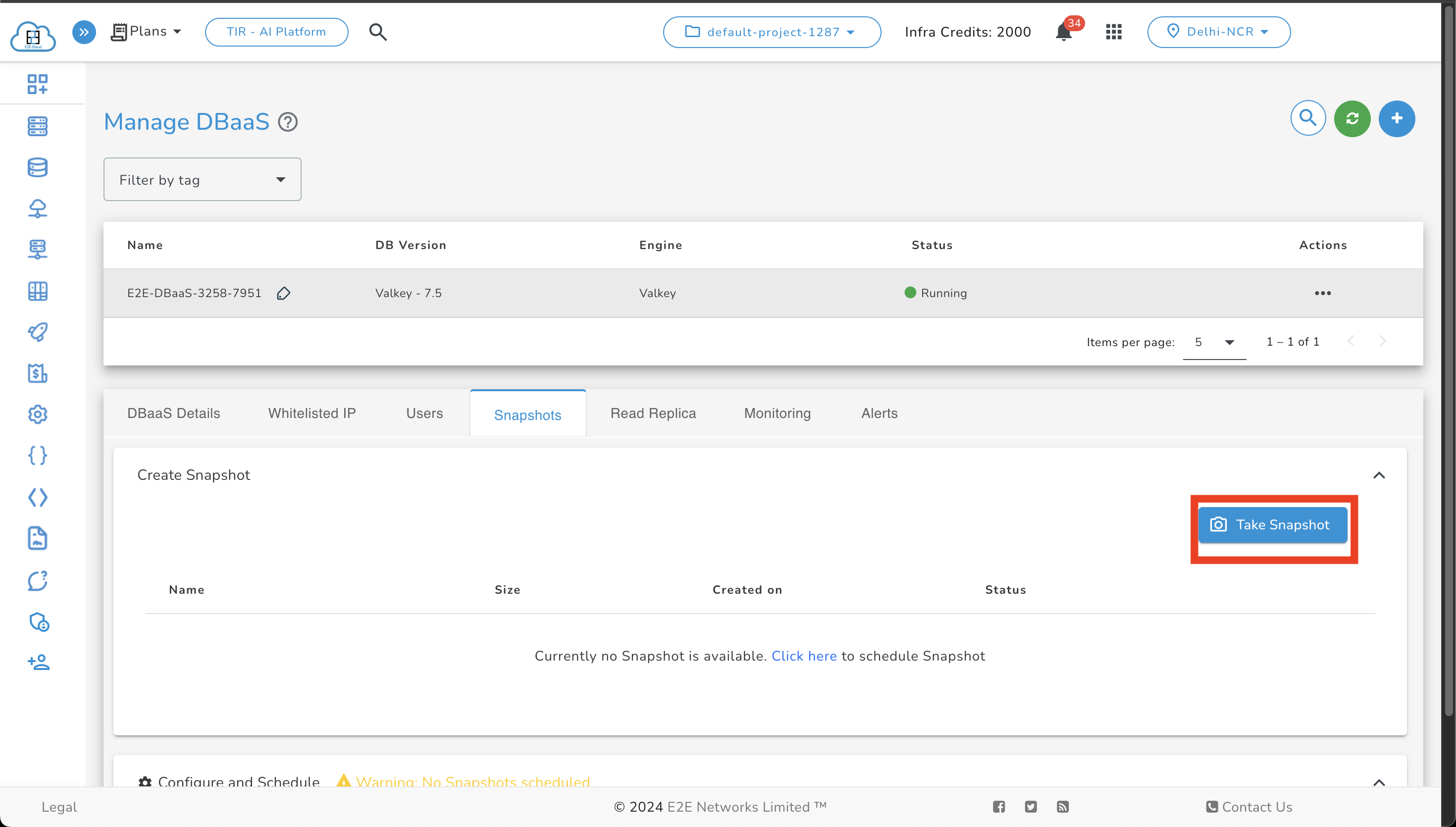
Read Replica
To add Read Replica just go to the Read Replica tab and click on add button.

Monitoring
To see the monitoring click on Monitoring tab.
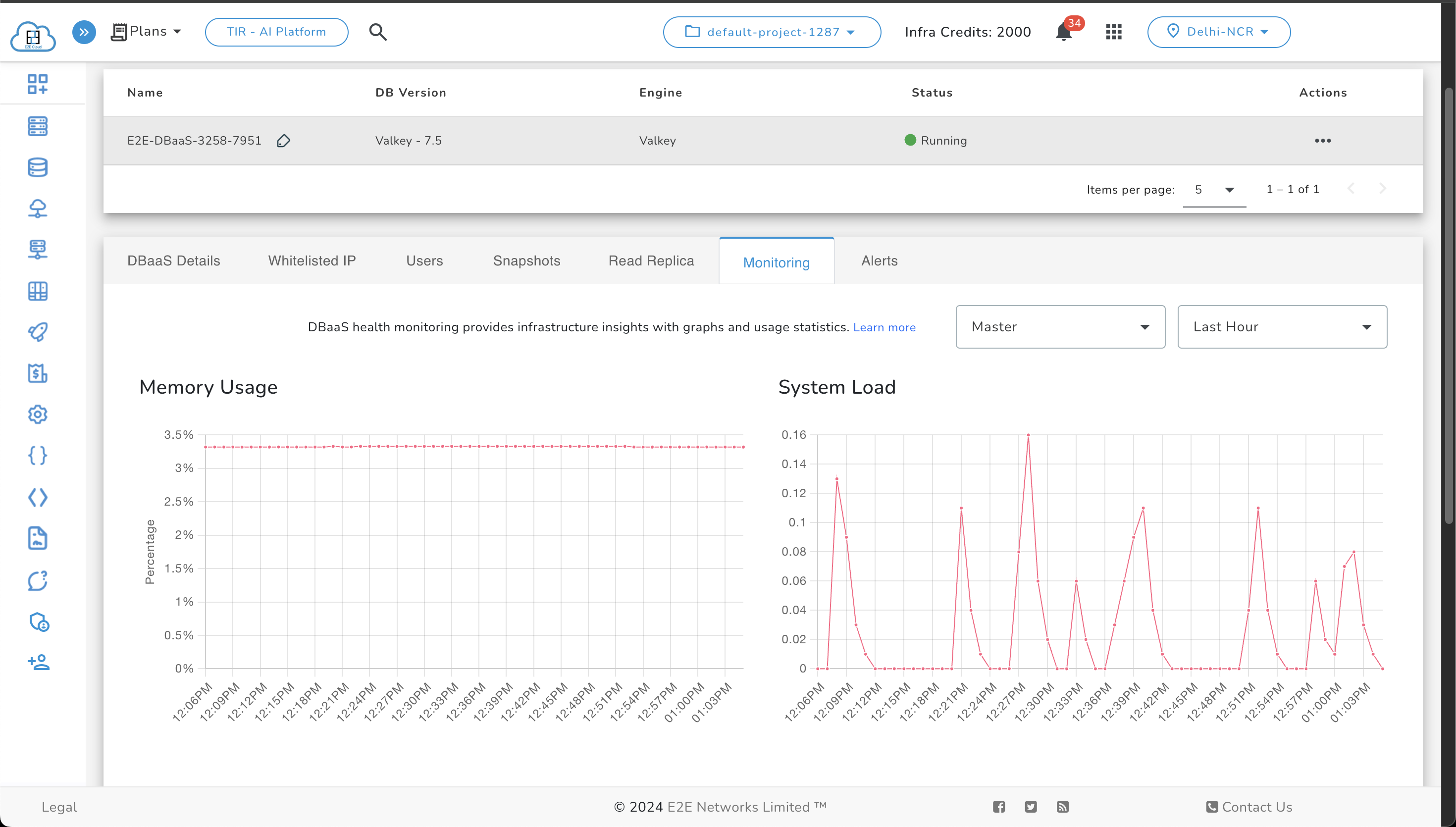
Alerts
To check the alerts click on Alerts tab.

To configure valkey, kindly click on the following link: Click Here
To connect to your database node using valkey command line
Once your database has been provisioned and its running status, You can get the database connectivity information on the dashboard under the connection details.
Public IPv4
Username
Password
Port
Enter the following command at a command prompt on your local or client desktop to connect to a valkey database.
valkey-cli -u "redis://<'username'>:<'password'>@<Public_IP>:6379/<"dbaas name">"
Note
When including the password in the connection string, ensure it’s properly URL encoded. This means replacing special characters like ‘@’ with their corresponding URL-encoded equivalents. For example, ‘@’ becomes ‘%40’, etc.

